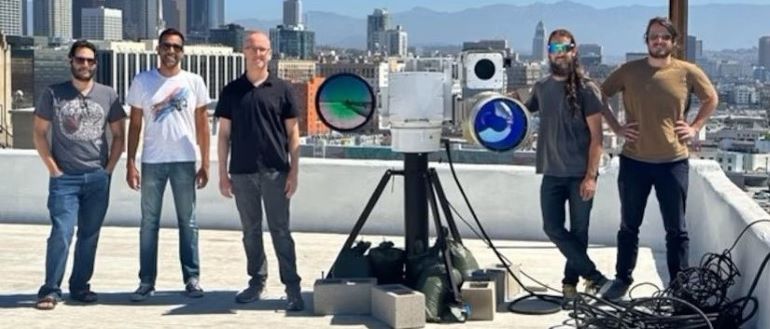
An AI-powered airspace monitoring system is set to guard the capitol of the United States and is likely to be scaled across other sensitive locations as the system rolls out.
Developed by Teleidoscope Inc., a California company that specializes in targeting software for augmented-reality games, the new AI system offers a ten-fold increase in performance capability over the 9/11-era system it replaces, according to Air Force Lt. Colonel Kurtis Engelson, the material leader for Battle Control Systems which oversees the National Capitol Region Air-Defense System. The Teleidoscope system has already completed an 18-month prototype demonstration. Teleidoscope has received a $100 million contract and it expects D.C. deployment this year. The D.C. area is home to six million people, key military bases, intelligence agencies and a myriad of government agencies.
The Teleidoscope system upgrades the camera and eye-safe lasers used for tracking and visually warning aircraft violating restricted airspace. This allows operators to visually identify and warn aircraft at much further ranges. The laser warnings are used to communicate with aircraft when radio communication has failed. The heart of the technology is called the Relocalizable Adaptive Discriminative (RAD) tracker which is able to auto-calibrate and self-correct its orientation on individual objects. The system also has a variety of image-enhancing tricks like defogging and decluttering. Interceptor jets are quickly scrambled against identified threats.
This AI technology has the potential to operate on any edge device or cloud-provided full-motion video feed. The technology has broad national defense applicability across the services for defense against asymmetric and near-peer threats like drones and cruise missiles, said Nick Ksiazek, the program manager in charge of the project. Additionally, the AI technology can be used to augment remotely piloted aircraft video feed tracking capabilities, further extending the defensive bubble. Sensitive infrastructure is likely to be included in time, likely reducing the incidence of unidentified flying objects.
From a military perspective, the procurement of the Teleidoscope system has been remarkably swift. Heidi Shyu, undersecretary of defense for research and engineering, said success and speed in fielding new technology in such condensed timeframes is the new normal.
“We are able to rapidly identify operational needs and materialize them into usable national defense solutions,” says Shyu. “This saves time and money, but more importantly, the decision advantage gained by technologies like this will save lives.”
The AI air defense system announcement comes as the Pentagon launches Task Force Lima to assess how the military can safely use generative AI and how it might be used against the United States. The military has been slow to embrace generative AI, primarily due to its tendency to “hallucinate” false conclusions. Automatic hallucination mitigation is still a largely unknown field of inquiry, notes the Pentagon.


